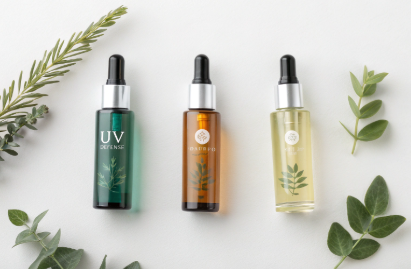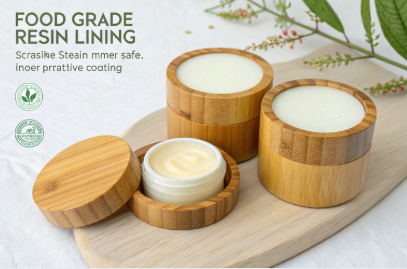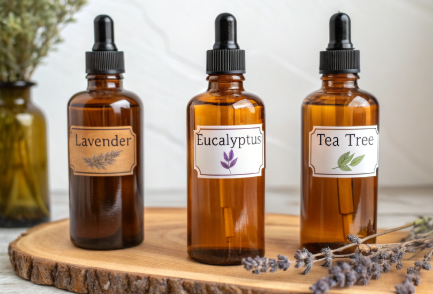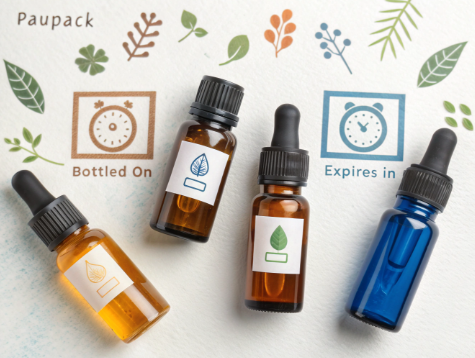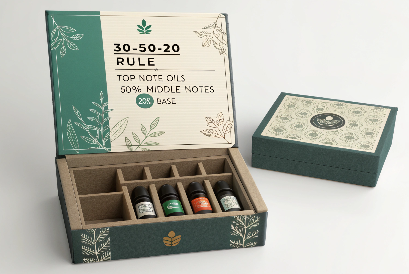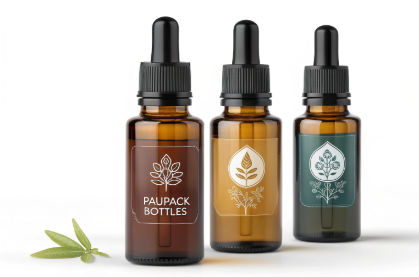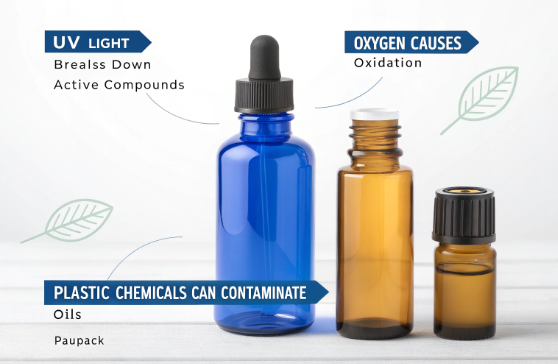Natural outside, safe inside—that’s the key to modern wooden jar design.
For wooden jars to safely store skincare, balms, or food-contact items, they need certified food-grade resin linings that ensure barrier performance, hygiene, and compatibility.
Let’s explore which lining materials deliver safety, aesthetics, and sustainability.
Why Do Wooden Jars Need Food-Grade Inner Linings for Modern Packaging?
Wood breathes, absorbs, and reacts—but your formula shouldn’t.
Unlined wooden jars can absorb oil, warp with moisture, or even leach tannins into sensitive skincare or edible products. A food-grade resin liner creates a sealed, inert interior surface.
Key reasons for inner linings:
-
🛡️ Prevents oil seepage and moisture penetration
-
🍃 Maintains product purity and freshness
-
🧴 Supports shelf life consistency
-
🌍 Meets food-contact safety regulations (FDA, EU 10/2011)
At PauPack, all wooden jars for cosmetics or edible contact are lined with certified food-grade resin or biopolymer systems—never raw wood unless purely decorative.
What Types of Food-Safe Resins Are Commonly Used for Jar Linings?
Not all linings are the same—each resin type offers different trade-offs in durability, flexibility, and eco impact.
The most widely used food-contact resin liners for wooden jars include epoxy, PU (polyurethane), PLA-based biopolymers, and PE/PP blends.
Common Food-Grade Lining Materials
| Resin Type | Features | Notes |
|---|---|---|
| Epoxy Resin (BPA-free) | High durability, glossy finish | Industrial-grade, strong barrier |
| PU Resin (Food-safe grade) | Flexible, semi-glossy, oil-resistant | Best for balm/oil-based formulas |
| Biopolymer (PLA or PHA) | Compostable, matte surface | Less heat-tolerant, best for dry goods |
| PE/PP Insert Liner | Molded food-safe plastic cup | Ideal for refill models or removable inserts |
PauPack offers all four options with custom fit and mold designs—depending on the product, climate, and sustainability goal.
How Do Different Resin Liners Perform in Terms of Heat, Oil, and Odor Resistance?
The liner’s job isn’t just containment—it’s protection under stress.
Each resin performs differently under high temperature, essential oils, long-term storage, or repeated washing—making selection critical to product quality.
Performance Comparison Table
| Test Factor | Epoxy | PU | Biopolymer | PE/PP Insert |
|---|---|---|---|---|
| Heat resistance | ✅✅✅ | ✅✅ | ⚠️ | ✅✅ |
| Essential oil contact | ✅✅✅ | ✅✅✅ | ⚠️ | ✅✅ |
| Odor neutrality | ✅✅ | ✅✅✅ | ✅ | ✅✅ |
| Recyclability | ⚠️ | ⚠️ | ✅✅ | ✅✅ |
| Compostability | ❌ | ❌ | ✅✅✅ | ❌ |
PauPack pre-tests all resin systems for 30–60 day simulated use with essential oils, waxes, and water-based creams—ensuring no warping, scent bleed, or migration.
How PauPack Selects and Tests Resin Linings for Global Compliance?
Every liner we use meets real-world standards, not just lab labels.
PauPack’s lining program integrates international food safety regulations, in-house simulation testing, and full documentation to support compliance with retail and customs requirements.
Our Resin Liner Testing Process
-
🧪 EU 10/2011 and FDA 21 CFR certification sourcing
-
🌡️ Thermal expansion test for heat-sealed products
-
💧 Essential oil immersion test (rose, citrus, tea tree)
-
🧴 Migration analysis (GC-MS based)
-
📦 Batch traceability + supplier declarations
We also provide clients with MSDS, food contact statements, and test result summaries—so you're inspection-ready at every port of entry.
How to Match Lining Material with Your Brand’s Sustainability and Safety Goals?
Your formula matters—but so does your footprint.
The right resin liner should align with both your product function and your sustainability positioning—especially in clean beauty, wellness, or eco-luxury markets.
Matching Guide
| Brand Priority | Recommended Liner |
|---|---|
| Max durability + essential oil resistance | BPA-free epoxy |
| Luxury balm or massage jar | PU food-grade resin |
| Clean beauty / refill system | PE/PP inner cup (replaceable) |
| Eco/organic line | Biopolymer liner or no-liner + pouch system |
PauPack supports brands through material trials, consumer testing kits, and storytelling content like “What’s Inside Our Jar” infographics to connect liner function to brand trust.
What Functional Problems Do Resin Liners Solve in Wooden Jar Packaging?
Nature isn’t always predictable—especially with packaging.
Raw wood is porous, reactive, and structurally dynamic. Without a liner, it absorbs oils, swells with moisture, and may compromise product consistency.
What Liners Prevent
| Problem | Liner Solution |
|---|---|
| Oil seepage | Resin creates a hydrophobic barrier |
| Moisture absorption | Prevents swelling or cracking in humid zones |
| Formula migration | Blocks contact with tannins or surface bacteria |
| Cleaning difficulty | Smooth liner = reusable surface for refills |
| Regulatory non-compliance | Resin allows FDA/EU food-contact clearance |
At PauPack, we design liners based on actual formula behavior—so your jar isn’t just beautiful, but dependable.
How Do Lining Materials Influence the Look and Feel of the Final Product?
Protection can be part of the design language.
The choice of liner affects visual finish (glossy or matte), tactile sensation, jar weight, and how light reflects off interior product—especially for transparent or low-fill formulations.
Visual & Sensory Impact
| Liner Type | Interior Effect | Aesthetic Message |
|---|---|---|
| Epoxy resin | Glossy, glass-like | Clean, precise, technical |
| PU resin | Soft gloss, warm touch | Boutique, handcrafted |
| Biopolymer (matte) | Natural, muted | Eco, botanical |
| PP insert | Defined cup shape | Functional, refill-ready |
PauPack offers color-matched or neutral liners, so that even internal materials feel considered and aligned with brand design.
What Regulatory Certifications Should Brands Request for Lined Wooden Containers?
Your liner may not be visible—but regulators still see it.
In both cosmetic and food-contact categories, liners must meet recognized safety standards like FDA 21 CFR 175.300 (USA), EU 10/2011 (Europe), and GB 4806.7-2016 (China).
Required Documents for Export & Retail
| Document | Purpose |
|---|---|
| MSDS (Material Safety Data Sheet) | Ingredient safety & chemical profile |
| Declaration of Conformity | Verifies resin meets contact-safe standards |
| Migration Test Reports | Confirms formula stability & barrier |
| Production batch traceability | Ensures liner consistency across orders |
| Resin sourcing certificate | Indicates base resin origin & compliance |
At PauPack, we supply this full compliance package for each batch—making your inspection or customs clearance process smooth and audit-proof.
How PauPack Customizes Liner Thickness, Texture, and Application Based on Formula Type?
No one-size-fits-all lining exists.
PauPack engineers each wooden jar lining based on the product it’s meant to hold—thicker for oil-rich balms, thinner for powders, glossier for serums.
Key Customization Dimensions
| Variable | Custom Range | Why It Matters |
|---|---|---|
| Liner thickness | 0.3mm – 1.5mm | Balances sealing vs flexibility |
| Surface texture | Matte / semi-gloss / full gloss | Affects pourability, grip |
| Application method | Cast, sprayed, molded-in | Matches shape & volume accuracy |
| Color tone | Transparent, tinted, branded | Preserves visual harmony |
We also offer compatibility testing—coating sample jars with your product and storing under real-time or accelerated conditions to ensure the liner holds up through shelf life.
How to Use Liner Technology to Elevate Brand Perception and Consumer Confidence?
The best technology is felt, not seen.
When customers notice oil doesn’t leak, surfaces stay clean, and jars last—liner performance becomes part of the brand’s quality perception.
Storytelling Opportunities
| Messaging Point | Example |
|---|---|
| “Sealed for purity” | “Interior lined with food-grade resin to preserve formula integrity” |
| “Safe touch” | “No raw wood exposure—ensures non-reactive storage” |
| “Reuse-ready” | “Durable lining allows hygienic refilling and reusability” |
| “Tested and trusted” | “Liner certified for skincare and food-safe contact” |
PauPack provides brands with liner explainer cards, digital icons, and certification language for inclusion on packaging, websites, and product education—bridging performance and trust.
Conclusion
The resin inside defines how the wood outside performs. With PauPack’s certified, customizable liner solutions, your wooden jar isn’t just beautiful—it’s built to protect, impress, and last.




